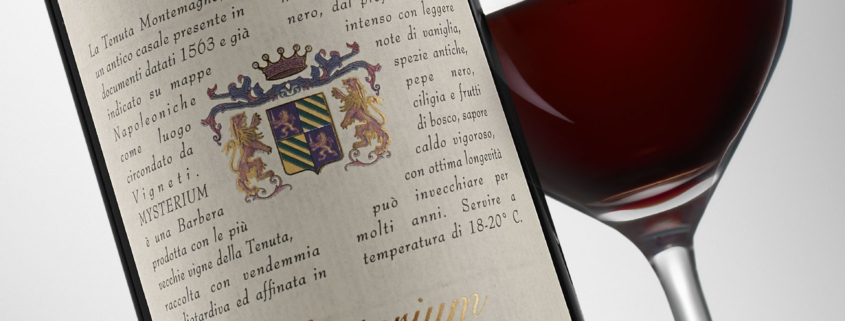Decanter, Mysterium and the top 40 Barbera d’Asti
The prestigious Decanter wine magazine has published an article dedicated to Italian oenology. Four pages have been reserved for the Barbera d’Asti DOCG appellation. The article also included the results of a blind tasting, performed with over 140 samples of the appellation, in which our Barbera Superiore Mysterium DOCG was among the top three wines with a score of 93 points.
A result that does us honor and that rewards the attention and commitment that we dedicate every day, in the vineyard as in the cellar, to the production of quality wines that are emblematic of excellence in Monferrato, Piedmont and National enology.
We publish below the notes of the Mysterium tasting, an extract from the article and the original PDF published in the magazine.
Tasting Notes
Tenuta Montemagno, Barbera d’Asti Superiore DOCG Mysterium 2016 – 93 points.
About fifteen years ago the Barea siblings bought an old 15th-century farmhouse along with its vineyards. The oldest vineyard on the estate (average age, 85) produces this Barbera: astoundingly harmonious, and supported by a clear, vital energy. Alc 14.5%.
Article Extract
Top 40
Barbera d’Asti
Barbera d’Asti originates from Monferrato or “Munfrà”, as it is called in local dialect, a region that spans the hills of Asti and Alessandria and is the prime production area for this Piedmontese wine.
Swathes of vineyards as far as the eye can see, given their shape over the centuries by vine-dressers, offer a unique spectacle of light and colour. Farmhouses, ancient hamlets and medieval castles sprout up here and there. Woods and hazel groves make up the background. This is a wine-producing area to visit and discover, so full of traditions, history and foodie wonders, that it was given its own UNESCO World Heritage Site recognition in 2014, together with the nearby Langhe and Roero zones.
Having taken our fill of so much beauty, we come to the soul of these lands: Barbera d’Asti. The lady in red, as they call it around here, finds its best expression among these soft Asti hills because nature selected it a long time ago and the terrains that have the best exposure have been identified for its cultivation.
Original article published in the magazine:




